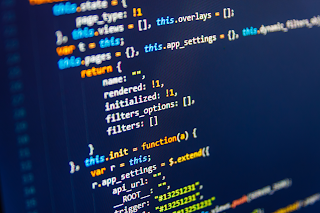New to Tech: Programming Languages - Start your journey
The University of Arizona Global Campus offers a course named Fundamentals of Information Technology & Literacy. If you are joining me on this new to tech journey, this course is a solid starting point.Information Technology as a discipline is essentially satisfying the computer needs of a business. What this means is that workers within the IT field will typically work with existing technology. It is their objective to determine the hardware and software components that are to be used to enhance or complete business processes. Examples of this include business analysis, project management, and more.
Comparably, computer science focuses in on the design and logic aspects of the components used by the IT field. This is heavy on algorithms, logic, and low-level coding. So, although, IT discipline does not typically utilize programming languages outside of basic automation tasks, the components they use to conduct their work is reliant on programming languages.
When looking at Information Technology as all thing’s computers, not the discipline, before one can understand the connections between IT (Information Technology) and programming languages they must first familiarize themselves with the fundamentals of IT. The fundamentals will include the general use of computers, networking, software, hardware, data management, and security.
Hardware can be summed up to the physical components of a computer. These components include the processor, memory, storage devices, input (e.g., keyboard) and output (e.g., monitor). Then you have the programs and operating systems (OS) that run on the computer hardware, essentially performing specific tasks. These programs and the OS are the software components.
While networking is simply the communication of data between computer systems, these networks can be local or over the internet. Next, data management is how the computer system organizes, stores, and retrieves data ensuring data integrity and accessibility. Lastly, there is the protection of the overall computer systems and networks from unauthorized access and data breaches. This protection is the security com
ponent of IT.
Now that we covered the basics of IT, we will dive into how programming languages are connected. There are a variety of languages that have different syntax, structures, and types of tasks. The first major connector is that programming languages are utilized by developers to create software and operating systems that interact with hardware. Essentially, writing the instructions that tell a computer what to do.
Just as hardware become dependent on the software created by programming languages, programming languages are reliant on the hardware to complete the specific tasks. For example, modern technology utilizes a keyboard as the input hardware, and a monitor as the output hardware. It is the software that gathers the inputs and instructs the computer to display the relevant output.
Programming languages are utilized to build additional forms of software, including application and web-based software. Great examples of this includes the Microsoft Word file that originally hosted this blog during creation, and the blog site you are reading it from. Software is the component of computer systems that essentially tell the physical components what to do. However, this software must be written in a structure that the computer can understand.
In the 1880s the structure started in binary form utilizing ones and zeros to represent, on and off, and eventually characters and symbols. This language is called machine language. The language used 01 as input, 11 to add, 10 as output, and 00 to stop. From here the language adapted into assembler language where zero’s and one’s were converted into readable text. Essentially, the user of the computer would see the terms “input”, “output”, etc. This was the very beginning of modernizing programming languages with the developer in mind, as opposed to the computer. Modern day programming languages are more complex and are utilized to develop operating systems, application software, database management, and more.
Programming languages have even been used to create low- to no-code solutions in application development and web design. As the technology advances there are many resources to ease the transition into the field. Ultimately, it is essential to understand the fundamentals of a language, it’s structure and use.
In summary, programming languages are a fundamental building block of technology and are used to create software and applications. They allow people to write instructions for computers to understand. Understanding programming languages and how they connect to other concepts like hardware components and functions, application software, databases, network architecture, management, and security is essential for those considering a career in the tech field.


Comments
Post a Comment